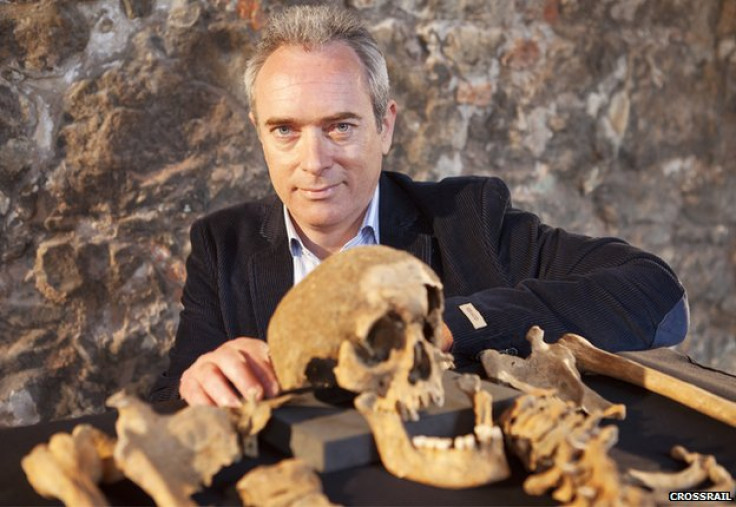See Video of Black Death Victims Unearthed by London Rail Tunnelers

New research on skeletons unearthed by London Crossrail excavations reveals that many died of plague during the 14<sup>th-century Black Death pandemic.
Twenty-five skeletons were uncovered in London's Charterhouse Square in March 2013. Scientists analysed the remains and found traces of the DNA of the Yersinia pestis bacterium, which was responsible for the Black Death.
Historical records suggest tens of thousands of people were buried in this emergency cemetery. Crossrail approached the University of Keele to undertake a forensic geophysics survey, a science usually used to locate mass graves and murder victims.

Crossrail Lead Archaeologist Jay Carver, who is heading up the research, said: "Analysis of the Crossrail find has revealed an extraordinary amount of information allowing us to solve a 660-year-old mystery.
"This discovery is a hugely important step forward in documenting and understanding Europe's most devastating pandemic. Historical sources told us that thousands of burials of Black Death victims were made in the 14th Century in the area that is now Farringdon, but until Crossrail's discovery, archaeologists had been unable to confirm the story.

"What's really exciting is the bringing together many different lines of evidence to create a picture of such a devastating world event as the Black Death. Historians, archaeologists, micro-biologists, and physicists are all working together to chart the origins and development of one of the world's worst endemic diseases and help today's researchers in ancient and modern diseases better understand the evolution of these bacteria.
"The forensic geophysics results are really intriguing and potentially an important breakthrough in burial ground research. We will undertake further excavations in Charterhouse Square later this year to confirm some of the results."
Scientists analysing the skeletons' bones and teeth came up with interesting insights into the birth, life and diet of Londoners during the 14th and 15th centuries:
- Many of the skeletons appear to suffer signs of malnutrition and 16% had rickets.
- 40% of those tested grew up outside London, possibly as far north as Scotland – showing that 14th-century London attracted people from across Britain just as it does today.
- The later skeletons from the 1400s had a high rate of upper body injury consistent with being involved in violent altercations.
- One individual had become a vegetarian later in life which is something a Carthusian monk might have done during the 14th Century.
- 13 of the skeletons were male, three female, two children, the gender was undetermined in the other seven skeletons.
- Research is consistent with the burial ground being used by poorer Londoners.
- High rate of back damage and strain indicating heavy manual labour.
A documentary, Secret History: The Return of the Black Death, will be broadcast in the UK on Channel 4 on 6 April at 8pm. It follows the Charterhouse Square discovery and looks at the history of the plague in Britain.
Find out more, in the YouTube video below:
© Copyright IBTimes 2024. All rights reserved.






